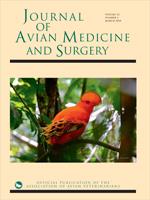A male juvenile bald eagle (Haliaeetus leucocephalus) was admitted to the Wildlife Center of Virginia with a left humeral fracture a large quantity of anthropogenic debris in the ventriculus, a blood lead level of 0.616 ppm, and clinical signs consistent with chronic lead toxicosis. Because of the poor prognosis for recovery and release, the eagle was euthanatized. Lead isotope analysis was performed to identify potential anthropogenic sources of lead in this bird. The lead isotope ratios in the eagle's femur (0.8773), liver (0.8761), and kidneys (0.8686) were most closely related to lead paint (0.8925), leaded gasoline (0.8450), and zinc smelting (0.8240). The lead isotope ratios were dissimilar to lead ammunition (0.8179) and the anthropogenic debris in the ventriculus. This case report documents foreign body ingestion in a free-ranging bald eagle and demonstrates the clinical utility of lead isotope analysis to potentially identify or exclude anthropogenic sources of lead poisoning in wildlife patients.
How to translate text using browser tools
1 March 2018
The Use of Lead Isotope Analysis to Identify Potential Sources of Lead Toxicosis in a Juvenile Bald Eagle (Haliaeetus leucocephalus) With Ventricular Foreign Bodies
Dana Franzen-Klein,
David McRuer,
Vincent A. Slabe,
Todd Katzner
ACCESS THE FULL ARTICLE





